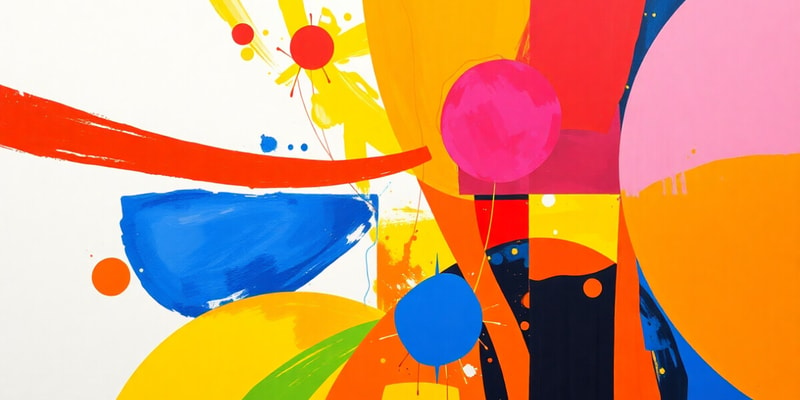Podcast
Questions and Answers
Which of the following is NOT a principle of design?
Which of the following is NOT a principle of design?
What does proportion refer to in design?
What does proportion refer to in design?
The proper harmonious relation of one part to another or to the whole.
What are the two types of scale mentioned?
What are the two types of scale mentioned?
Contrast is the opposition of similar elements in a work of art.
Contrast is the opposition of similar elements in a work of art.
Signup and view all the answers
What is meant by balance in design?
What is meant by balance in design?
Signup and view all the answers
The human scale in architecture is based on the dimensions and proportions of the ______.
The human scale in architecture is based on the dimensions and proportions of the ______.
Signup and view all the answers
Study Notes
Principles of Design
- Design is the creation and organization of formal elements in a work of art.
- Design principles are fundamental and comprehensive concepts of visual perception for structuring and aesthetic composition.
Proportion and Scale
- Proportion refers to the harmonious relation of one part to another or to the whole.
- Scale refers to the size of something compared to a reference standard or to the size of something else.
-
Types of Scale:
- Visual Scale: How small or large something appears to be related to its normal size or the size of other things in its context.
- Human Scale: Based on the dimensions and proportions of the human body.
Bases of Proportion
- Natural Materials Proportion: Rational proportion of materials according to their specific structural tasks.
- Structural Proportion: Proportion of materials according to the process through which they are manufactured.
- Manufactured Proportion: Proportion of materials according to the process through which they are manufactured.
- Historical Proportions: “Desirable” proportions developed in the course of history.
Contrast
- Contrast is the opposition or juxtaposition of dissimilar elements in a work of art to intensify each element’s properties and produce a more dynamic expressiveness.
- Contrast creates visual variety, excitement, and interest in a building and can be achieved by:
- Using different sizes.
- Using different materials, textures, and colors.
- Manipulating the light, shade, and shadow of masses.
Balance
- Balance is a state of equilibrium between contrasting, opposing, or interacting elements.
- Balance is also the pleasing or harmonious arrangement or proportion of parts or elements in a design or composition.
Studying That Suits You
Use AI to generate personalized quizzes and flashcards to suit your learning preferences.
Related Documents
Description
Explore the essential principles of design, focusing on the concepts of proportion and scale in creating harmonious artistic compositions. Understand how different types of scale and bases of proportion influence the perception of visual art.




